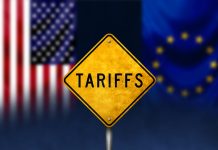By Deanne Butchey and Jerry Haar
In February of this year, President Trump called for the creation of a national Sovereign Wealth Fund (SWF) with more than $2 trillion in assets. An SWF is a state-owned investment fund that focuses on economic development. This type of fund may offer the U.S. several strategic advantages, particularly in stabilizing government finances, enhancing long-term economic competitiveness, and generating returns on national wealth, with the promise of fiscal stability and deficit reduction. Any surplus revenues earned may be used to invest in assets that generate long-term returns, helping to grow real gross domestic product (net of inflation), and reduce national debt and fiscal deficits. The funds may also act as a stabilization mechanism during economic downturns by providing funding when tax revenues decline.
Additionally, the fund could be used to invest in industries vital to national security and economic leadership, such as semiconductors, AI, clean energy, and infrastructure, thus ensuring both economic sovereignty and supply chain resilience. Like Norway’s sovereign wealth fund, a U.S. fund could grow over time and be used to fund pensions, social programs, or public infrastructure without raising taxes.
Two other big benefits of a fund are: [1] enhancing global competitiveness, as strategic investments in post-war reconstruction, technology, advanced manufacturing, and green energy would ensure that the U.S. remains an economic leader; and [2] reducing dependence on foreign investment, since the U.S. could finance more domestic projects and innovations without relying heavily on foreign capital. Norway, China, Abu Dhabi, Japan and Saudi Arabia all have robust and well-performing sovereign wealth funds. Therefore, it behooves the U.S. to give serious consideration (that means ensuring guardrails and independence) to establishing such a financial vehicle.
Table 1 summarizes some of the largest SWFs, including their country of origin, establishment date, and changes in the asset size over the last six years.
Table 1

Note: Asset sizes for 2024 are based on data from the Sovereign Wealth Fund Institute.[1]Data for 2018 are from Reuters[2]
Norway, whose vast oil and gas production in the North Sea generates 10% of the country’s GDP has long held the position as the largest single SWF globally. In 2024 alone, the fund earned $222 billion in capital gains based on its investments in the tech sector, most notably its top holdings, Apple, Microsoft, and Nvidia. However, it is a well-known fact that in the last five years, the “Magnificent Seven”[3], driven by the AI boom have significantly outpaced the rest of the S&P 500’s 2024 gain. In fact, these seven stocks alone were responsible for more than half of this market’s return. This fact is important because many of the SWF’s recent outsized returns likely occurred because of their US-based investments. Although most major global markets finished 2024 in positive territory, in the fourth quarter, with the exception of the S&P 500, the majority of markets declined. In 2024, emerging markets beat developed international markets (7.5% versus 3.8%) but significantly trailed the US.
Combined, China’s two biggest funds, hold $2.4 trillion in assets facilitating investments in infrastructure, green energy, and mining projects across Africa and much of the developing world. The top SWF’s in the Middle East which aim to diversify their economies away from oil, have over $3.5 trillion in assets, invested in strategic global investments in the following sectors: technology, healthcare, renewable energy, infrastructure, and financial services.
Investment returns for each fund are not publicly disclosed in a standardized manner and the market value of individual investments in illiquid private equity and credit which have grown in dominance in recent years is difficult to ascertain, however it is noteworthy that SWFs collectively added approximately $866 billion in assets just in the 12 months leading up to March 2018, with 71% of these funds experiencing asset growth during that period. Recent estimates place the total assets under management by SWFs in excess of $13 trillion. Individual annual reports of each SWF provide insights into their various investment returns and strategies over time, with the common theme of a global diversification approach away from their local revenue streams while increasingly using AI in their investment processes. Sovereign investors have emphasized stability of asset allocations combined with lower volatility in recent years because of the delayed start to global monetary policy tightening combined with a loosening of fiscal policy.
Joseph Bankman of Stanford Law School and Mark P. Gergen at the University of California at Berkeley School of Law have suggested that the US SWF could be funded by eliminating corporate income tax, instead requiring corporations to issue nonvoting shares directly to the government. The government fund would be required to hold the shares as an investment, and the income they generate would replace the tax. Their proposal would create nonvoting shares owned by the government but still share in investment losses as well as gains.
Undoubtedly, if done correctly a national US fund can help it to improve its global perception and influence while securing important access to important supply chain components, commonly known as vertical integration. This can involve acquiring or merging with companies that supply raw materials, manufacture products, or distribute finished goods. The goal is to gain more control over the supply chain, reduce costs, improve efficiency, and increase market power.
To avoid financial corruption and political interference, a US SWF should concentrate on global markets rather than domestic ones, where US government investments could have a hugely distorting effect. The fund should also be a passive investor rather than invest and assume direct ownership stakes in US corporations and companies, focusing on strategically maximizing returns by perhaps investing in potentially high-reward businesses, such as in raw materials, artificial intelligence and emerging energy sectors.
The SWF also should be run by a non-partisan body of advisers, for example the SEC, ensuring transparency and accountability much like in the public financial markets. This body should be independent from both the different priorities of presidential administrations and from the spending priorities of Congress and its members in both chambers. This also means the investments of the SWF should happen in transparent and responsible ways within a firm and strict legal framework.
Sovereign wealth funds do not play a role in fiscal management, but SWFs can stabilize a country’s economy through diversification and the generation of wealth for future generations. Therefore, the US would be wise to carefully evaluate and consider their adoption as an economic policy instrument.
About the Authors

 Deanne Butchey and Jerry Haar are professors of finance and international business, respectively, in the College of Business at Florida International University.
Deanne Butchey and Jerry Haar are professors of finance and international business, respectively, in the College of Business at Florida International University.




































